WWII’s Most Bizarre Battle? Blimp vs. U-Boat
March 28th, 2023
5 minute read
During 1942 and 1943, as German U-Boats lurked off the east coast of the United States, the Florida Straits proved a particularly fertile hunting ground for Nazi submarines.
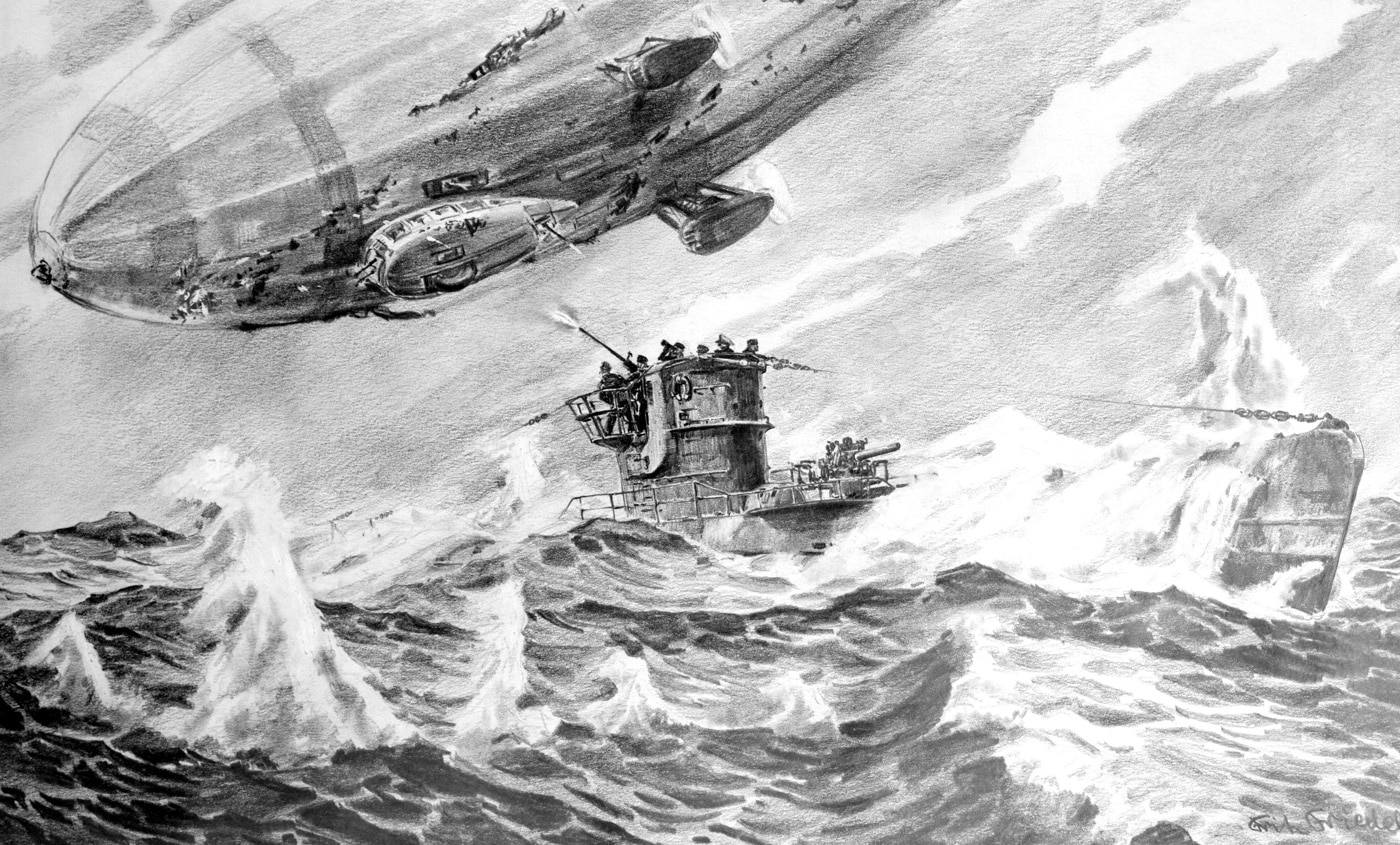
As America was unprepared when war arrived in December 1941, there were few resources available to defend America’s eastern seaboard and the valuable merchant shipping that hugged the coast. In those dangerous early days of the war at sea, one of America’s prime defenders was the normally docile “blimp”.
The Solution?
In 1939, the U.S. Navy developed the K-Craft airship, or blimp, which would become a workhorse during WWII used to patrol for Nazi U-boats and provide important cover for Allied convoys. The blimps were equipped with the ASG-type radar, featuring a detection range of 90 miles and magnetic anomaly detection (MAD) equipment.
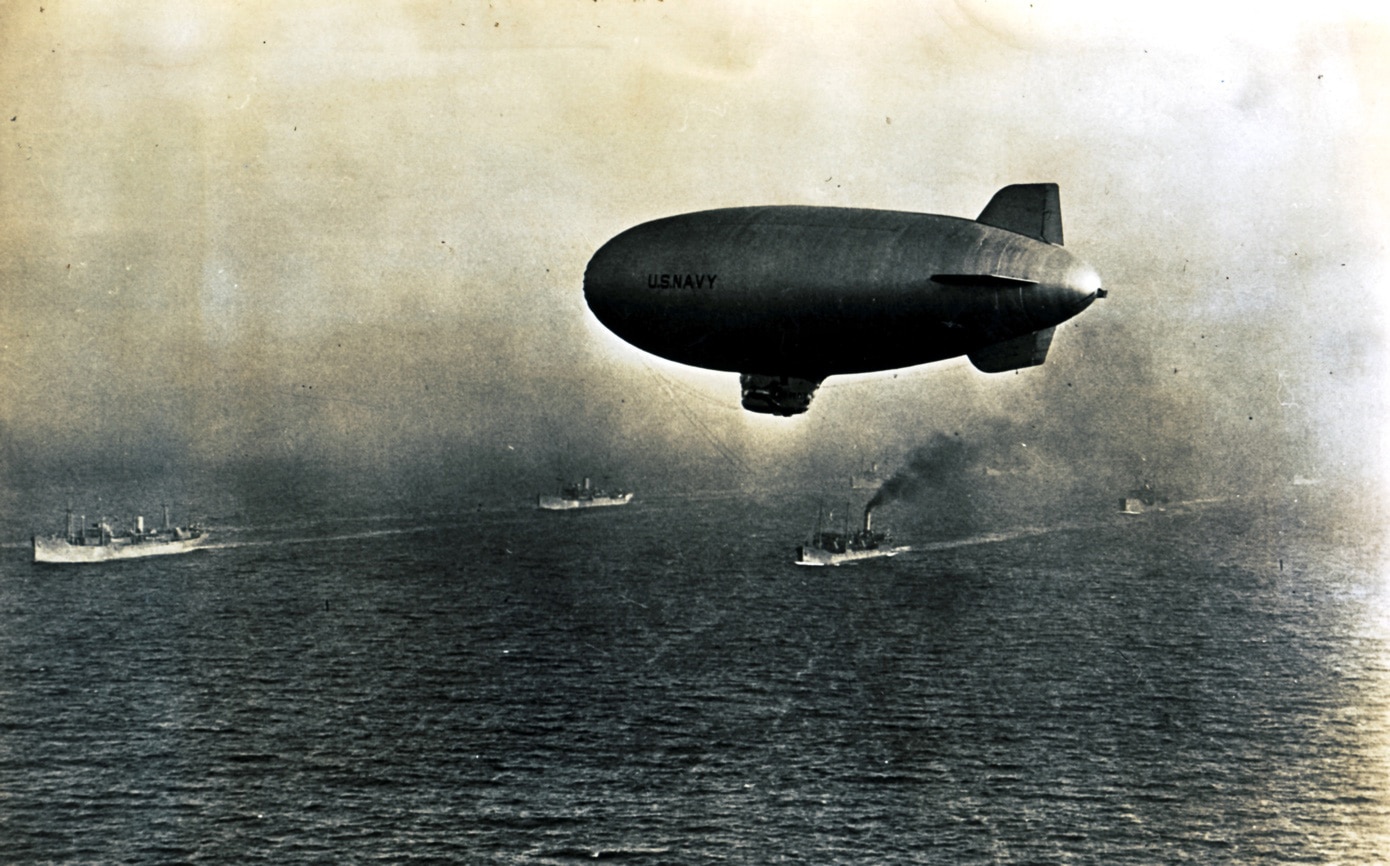
The K-ships carried four Mk-47 depth bombs (with two in a bomb bay and two on external pylons), as well as a .50 cal Browning M2 machine gun in the front of the control car. A crew of 10 was standard on K-ships, made up of a commander/pilot, a navigator/pilot, two co-pilots, an airship rigger, an ordnance chief, two aircraft mechanics, and two radio operators.
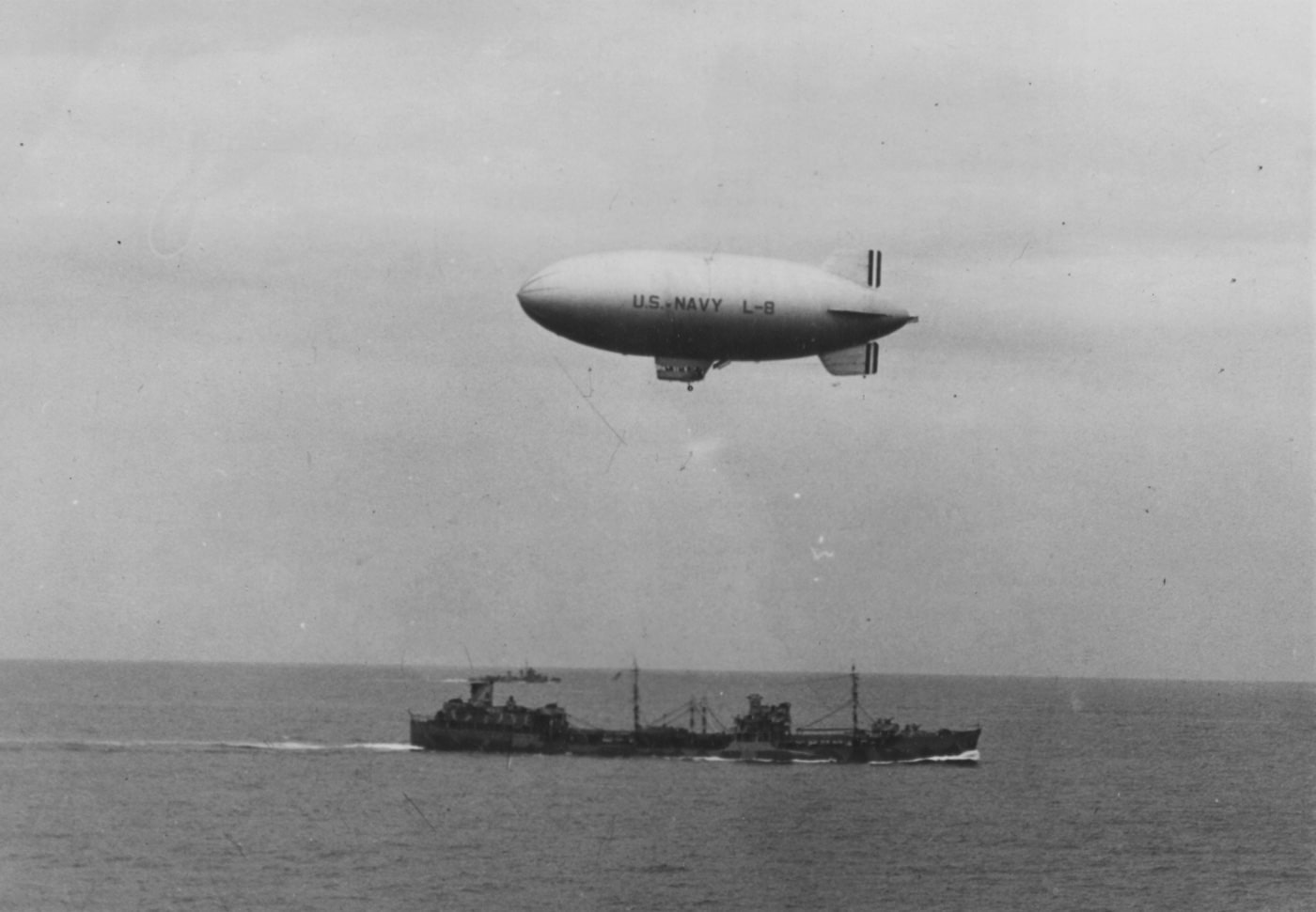
The K-Ships could remain aloft for about 24 hours, making them ideal for anti-submarine warfare as well as search and rescue missions. Blimp patrols were generally long and uneventful, but one remarkable incident involving a Navy blimp made for one of the most amazing stories of World War II.
The Duel
On the night of July 18, 1943, the U.S. Navy blimp K-74 (from Blimp Squadron ZP-21 based at NAS Richmond, Florida) was engaged in convoy escort duties over the Florida Straits. During this flight, K-74’s onboard radar located a German submarine running on the surface. As no American units were available to engage the enemy and as the U-Boat was proceeding directly towards the convoy, K-74’s commander decided to attack with everything they had.
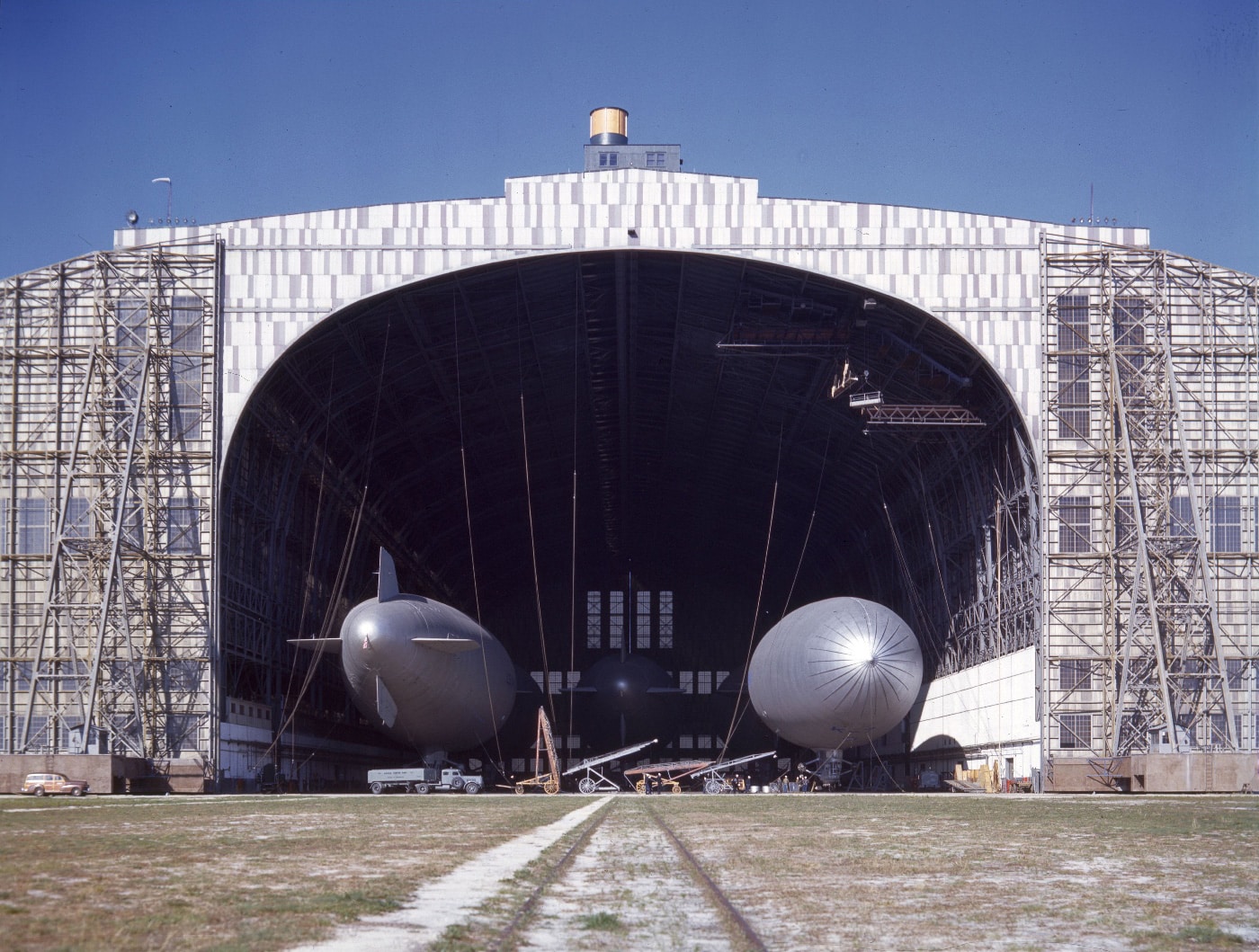
There is some confusion if K-74’s depth bombs failed to release during the attack, but damage below the sub’s waterline would indicate that at least one depth bomb did explode nearby. K-74’s crew engaged the sub with the .50-caliber MG mounted in the nose of the gondola, as well as their personal weapons — including a Thompson SMG and M1911 pistols.
Return fire from the U-Boat’s 20mm AA guns knocked out one of K-74’s engines, punctured the gasbag in several places and wounded one crewman. In return, K-74’s fire damaged the submarine, the hammering from the big .50-caliber rounds damaged the sub’s hull, rendering it unable to submerge. U-134 left the area, limping back to its base in France on the surface. She never made it home. U-134 was sunk with all hands aboard on August 27, 1943, in the Bay of Biscay, by the British frigate HMS Rother.
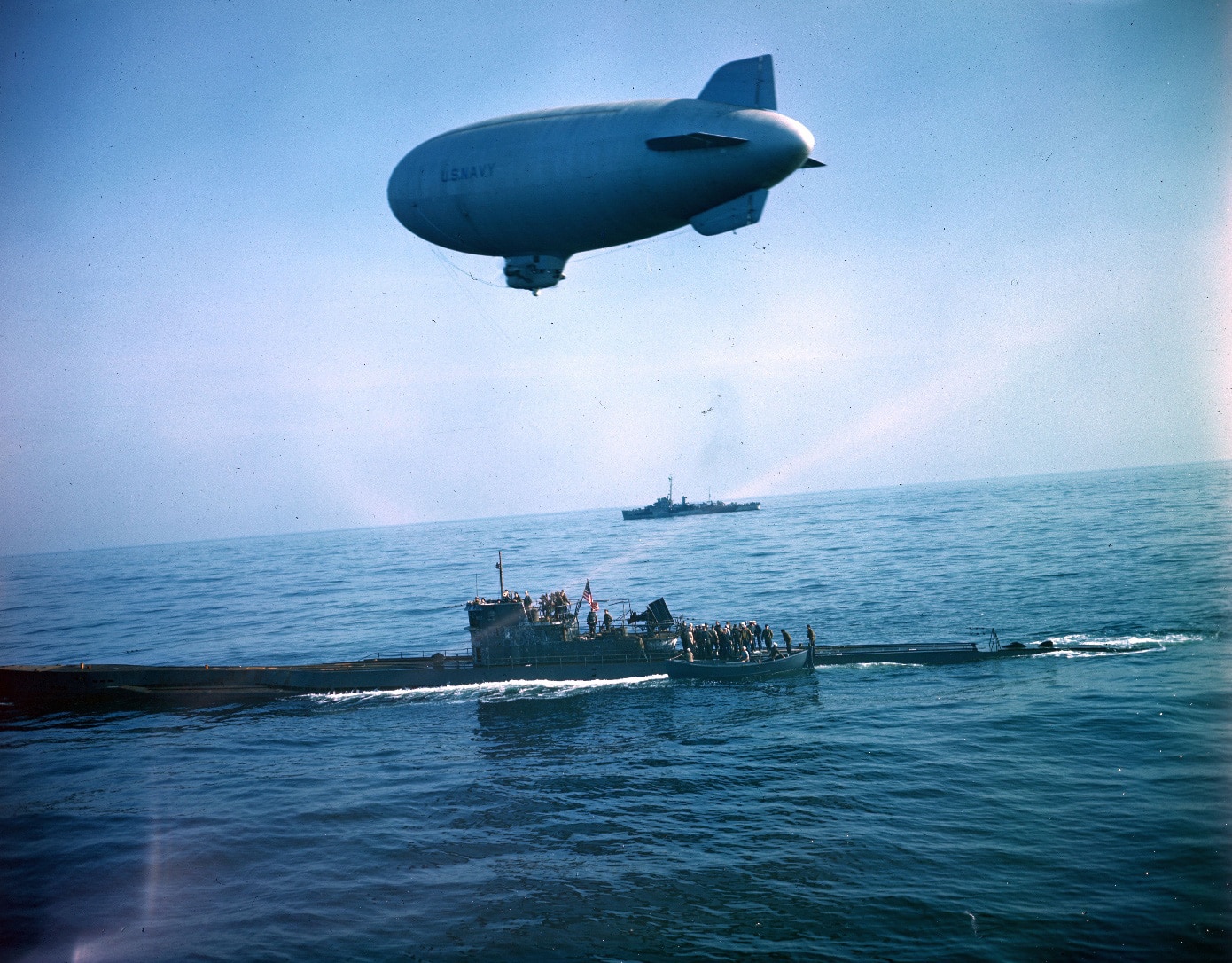
As for K-74, the damaged blimp crashed into the sea. While the crew was in the water waiting to be rescued by the U.S. Navy destroyer Dahlgren, tragedy struck when the wounded crewman was attacked by sharks and disappeared. The rest of the crew was rescued. Thus ended the only known gun battle involving a U.S. Navy blimp, and the only loss of an airship crewman due to enemy action.
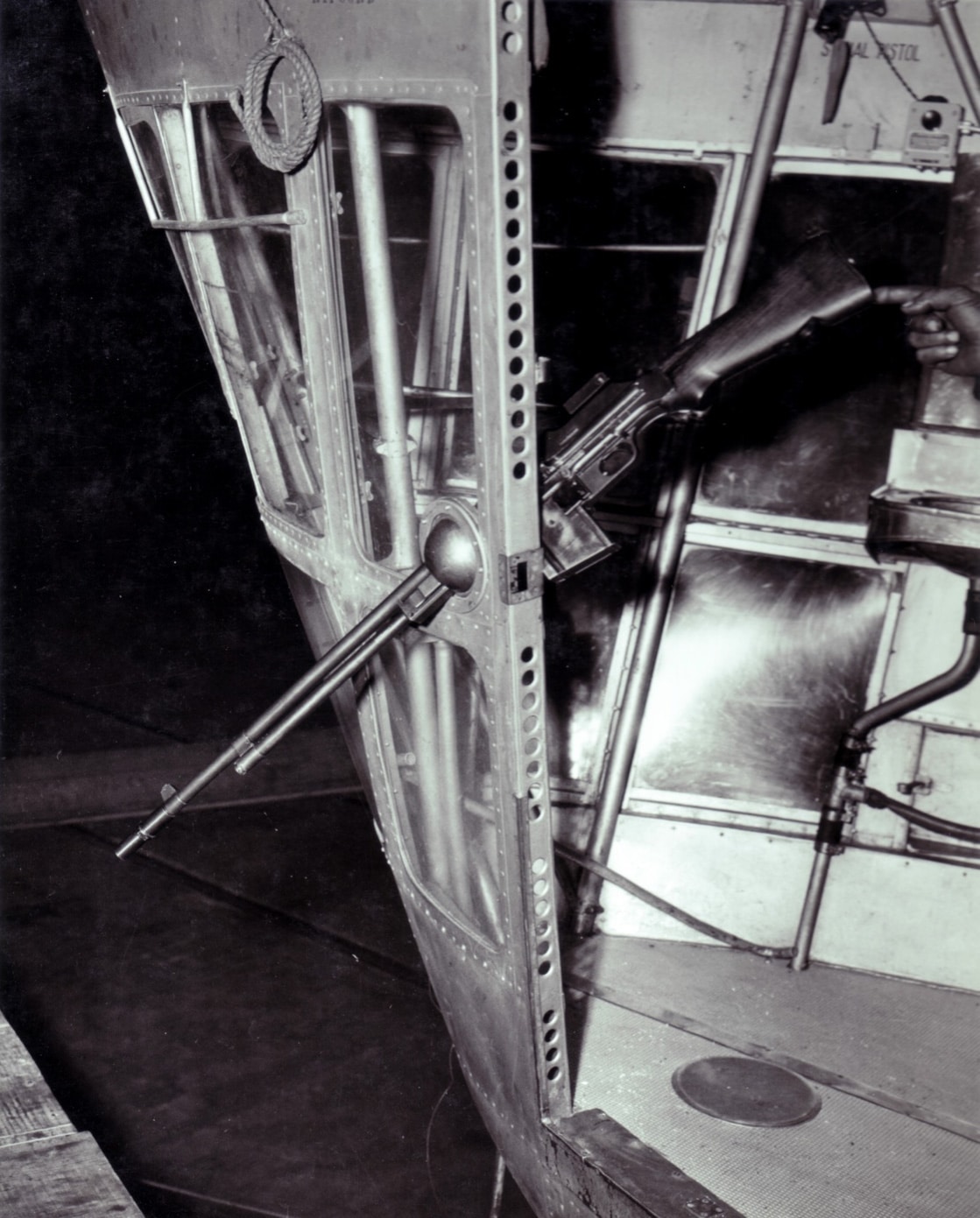
Before withdrawing from the area, crewmen from U-134 boarded K-74’s floating gondola and photographed parts of the wreck. These images were passed to another U-boat along with the description of the battle with K-74. The U.S. Navy did not know of their existence until they were discovered in West Germany in 1957.
Additional Firepower
About 15 years ago, I found a handful of photos in the U.S. Navy collection at the U.S. National Archives — the images showed an experimental mounting of a Browning Automatic Rifle in the gondola of a Navy K-ship blimp. Although the photos were dated “October 1943”, there is no way to know for sure if the experimental BAR mount was initially conceived before or after K-74’s gunfight with U-134, but testing of additional armament for the K-Ships was accelerated after the blimp’s combat with the sub.
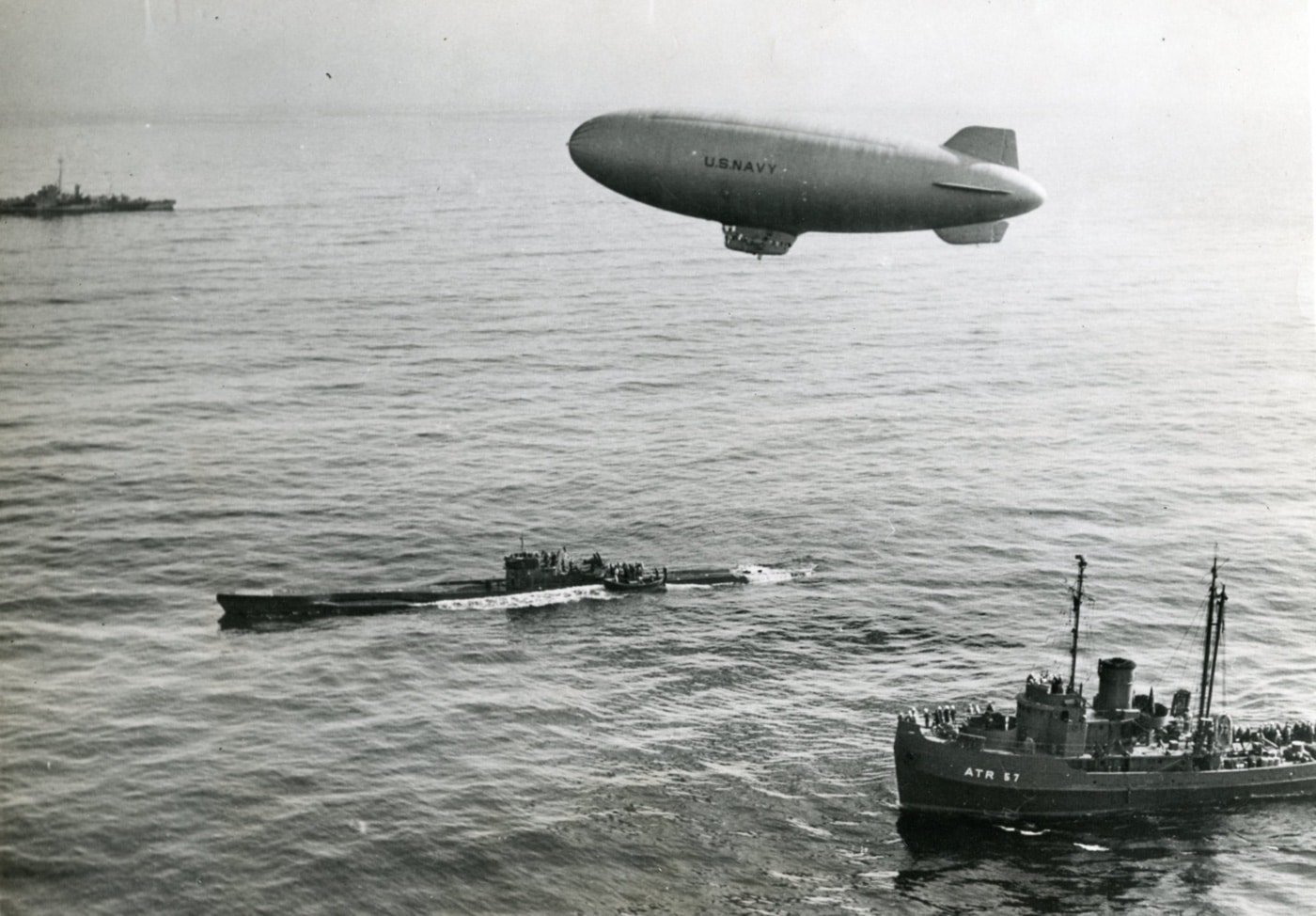
No doubt that the accurate and hard-hitting BAR would have been a tremendous help to the K-74 crew in their gunfight with U-134. As far as is known, no BARs were ever mounted on K-ships on active duty.
Conclusion
So there you have it — what must be one of the most bizarre battles of World War II, fought off the coast of the United States by two extremely unlikely opponents. One was a blimp never truly intended for battle, but one that did in fact manage to wound its deadly opponent and seal its ultimate fate.
Editor’s Note: Please be sure to check out The Armory Life Forum, where you can comment about our daily articles, as well as just talk guns and gear. Click the “Go To Forum Thread” link below to jump in!
Join the Discussion
Continue Reading
Did you enjoy this article?

 866
866






